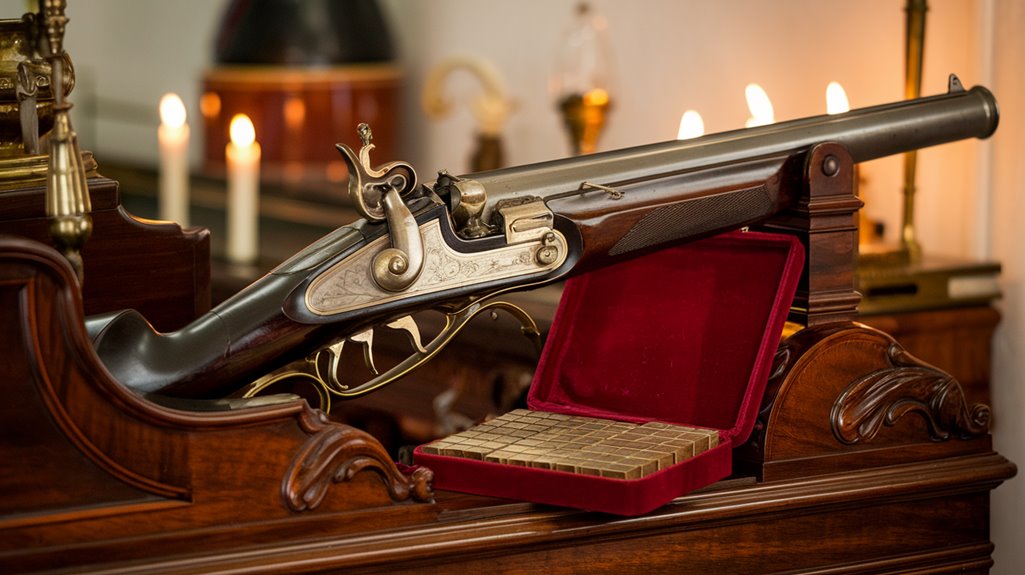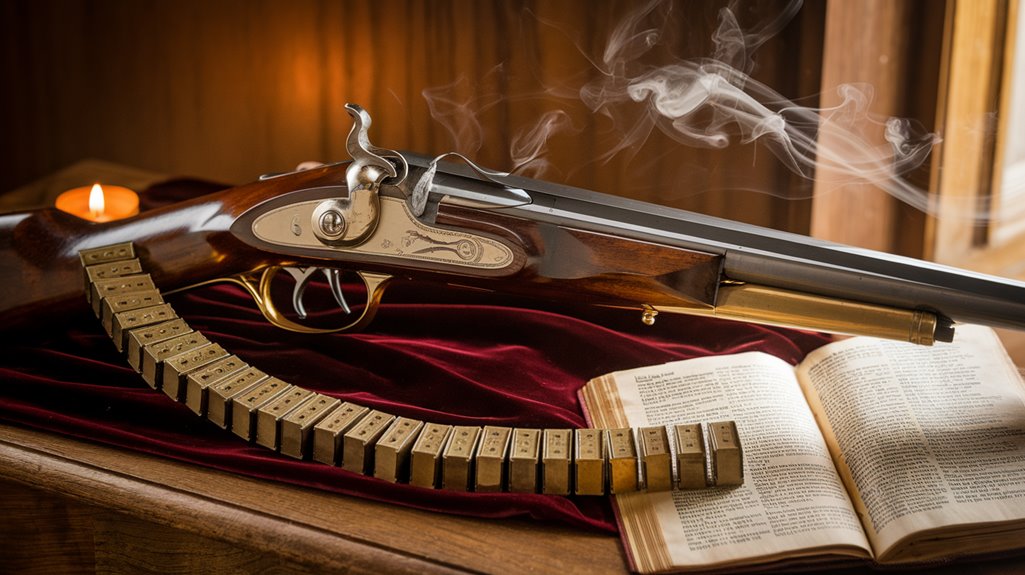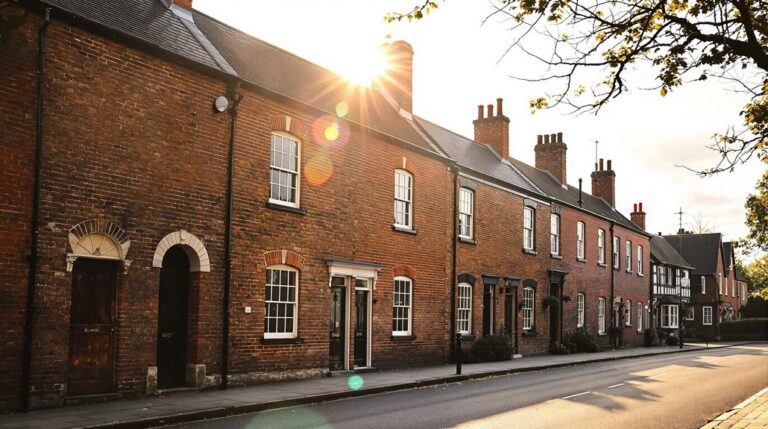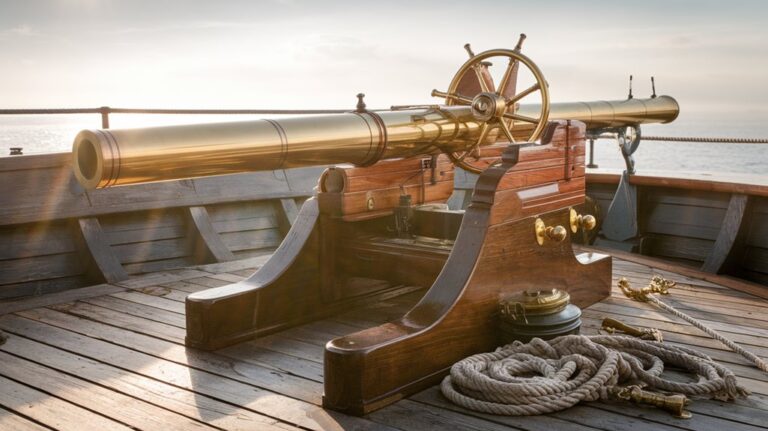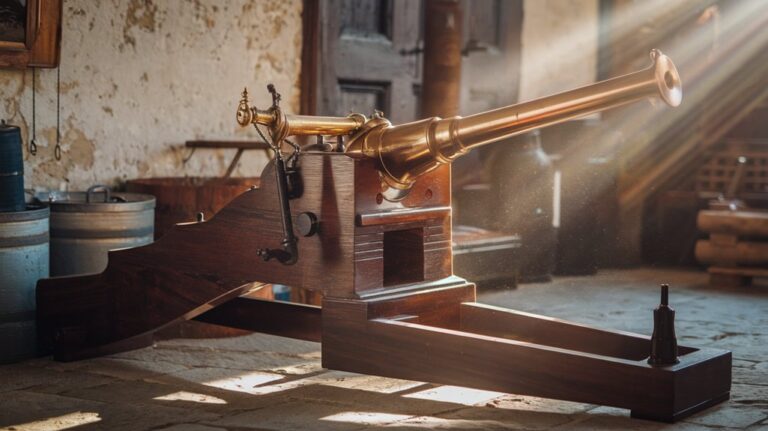Yes, Square Bullets Existed: The Weird 18th-Century Puckle Gun
Picture yourself on an 18th-century naval vessel, where you've just spotted a strange-looking weapon with a rotating cylinder and an unusual ammunition box filled with square bullets. What you're looking at is the Puckle Gun, one of history's most peculiar firearms. While today's weapons rely on standardized round ammunition, this 1718 invention broke convention by offering both round and square bullets – each designed for a specific type of enemy. There's more to this odd weapon's story than meets the eye.
The Story Behind James Puckle's Revolutionary Weapon
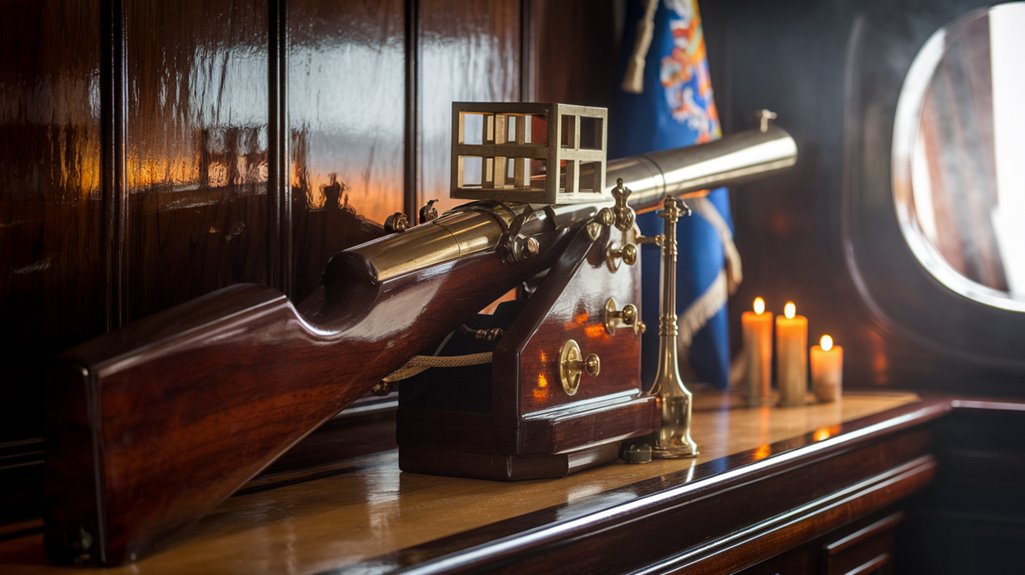
While the early 18th century was dominated by single-shot muskets, James Puckle sought to revolutionize naval warfare with his 1718 invention. As a lawyer and writer known for his moral dialogues, Puckle's background might seem unlikely for a weapons innovator. His biographical details would later be documented in the first edition of the Dictionary of National Biography.
Yet, he envisioned a powerful defense against ship boarding – a multi-shot gun that could fire up to nine rounds per minute. His most controversial innovation was designing the weapon to fire square shaped bullets specifically against Turkish forces.
You'll find Puckle's invention timeline particularly fascinating, as he developed one of history's first patented repeating weapons during an era of linear tactics. His gun mounted on a tripod and used a flintlock mechanism, making it revolutionary for its time.
Though only a few were produced, including two purchased by the Duke of Montagu, the invention proved Puckle's forward-thinking approach to military technology.
Design Features That Made the Puckle Gun Unique
Innovation marked the Puckle Gun's distinctive design, featuring a revolutionary revolving cylinder that could hold up to 11 shots.
You'll find its matchlock mechanism was quite advanced for 1718, allowing you to fire nine rounds per minute – far outpacing the typical musketeer's rate of 2-5 shots.
What made this weapon truly unique was its ability to fire both round and square bullets, with the latter specifically designed for use against Ottoman Turks. A two to three man crew was needed to operate the weapon effectively.
The gun's 3-foot barrel sat mounted on a tripod, giving you control over elevation and traversal. During a notable demonstration in 1722, the weapon achieved an impressive 63 rounds per minute.
While its flintlock mechanism proved somewhat unreliable and clumsy, the gun's innovative cylinder could be detached for reloading, and its 50-75 yard range matched contemporary muskets.
These features made the Puckle Gun a remarkable piece of engineering for its time.
Square Bullets and Religious Warfare
The most notorious feature of the Puckle Gun wasn't its revolving cylinder, but rather its religiously-motivated ammunition design.
James Puckle created a weapon that fired both round and square bullets, with the latter specifically intended for Muslim Turkish forces. This stark example of religious symbolism in weapon design reflected the intense Christian-Ottoman conflicts of the 18th century.
Puckle's patent explicitly stated that square bullets would inflict more grievous wounds on Muslim enemies, claiming this would help "convince the Turks of the benefits of Christian civilization." The weapon was primarily developed to defend against Ottoman maritime raids that threatened European trade ships.
The gun could shoot nine shots per minute, significantly outperforming the standard muskets of the era. This controversial design choice raises questions about warfare ethics of the period. However, the square bullets proved impractical due to their erratic flight patterns, and there's no evidence they were ever used in actual combat against Ottoman forces.
Why the British Military Said "No Thanks"
Despite showing initial promise as a rapid-fire weapon, Britain's military leaders quickly soured on the Puckle gun after its 1717 trials at Woolwich.
The gun's flintlock mechanism proved frustratingly unreliable, and its complex design made it impractical for mass production and battlefield use. Originally designed as an anti-boarding weapon, the Puckle gun's primary purpose was to defend British ships against enemy forces.
The military rejection stemmed from several critical technical flaws. You couldn't count on the weapon when you needed it most – the flintlock would fail, leaving soldiers vulnerable in combat situations. The weapon's dual ammunition design allowed it to fire both round and square bullets, though this innovative feature wasn't enough to save it from rejection.
While its ability to fire nine shots per minute impressed observers, the gun's high production costs and maintenance requirements further dampened military interest.
Without government support or enthusiastic investors, the Puckle gun's fate was sealed. Only a handful were ever produced, possibly as few as two, relegating this innovative but flawed weapon to the footnotes of military history.
Combat Performance and Real-World Applications
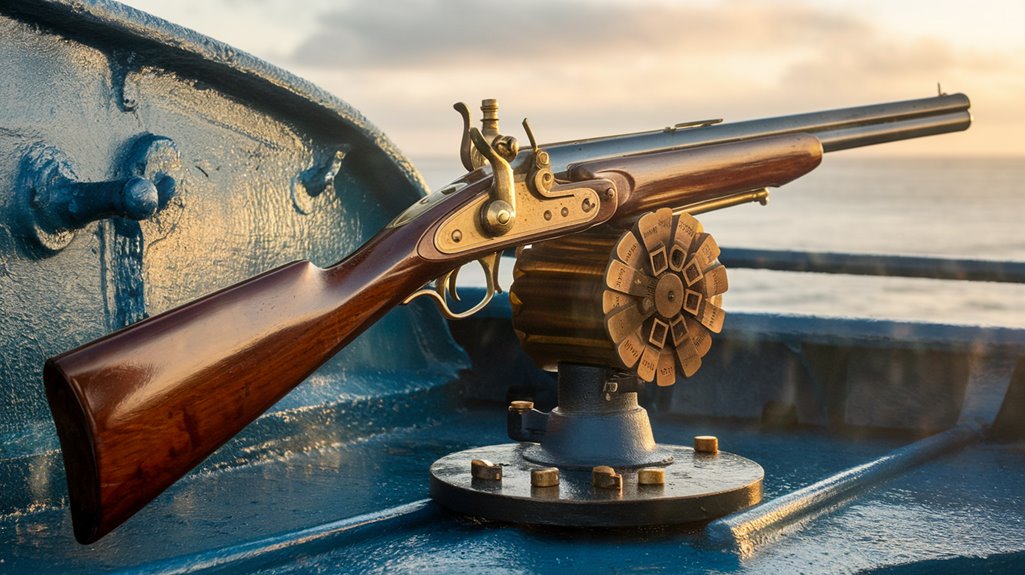
When put to the test, James Puckle's revolutionary gun demonstrated mixed results in real-world trials. You'd be impressed by its ability to fire nine shots per minute, outpacing the standard musketeer's two to five rounds. During a 1722 public demonstration, it managed 63 shots in seven minutes. The gun came in two versions, with the square bullet design specifically intended for use against Turkish forces.
However, reliability concerns plagued the weapon. The flintlock mechanism often failed during rapid-fire sequences, and operational challenges meant you'd need two to three men to run it effectively. Public displays at Woolwich Gardens drew attention to the weapon's capabilities.
While the Duke of Montagu purchased two guns for a West Indies expedition, there's no evidence they ever saw combat. The British military ultimately passed on the weapon, deciding its complexity outweighed its benefits.
Despite being designed to defend ships against Ottoman pirates, the Puckle gun remained more of an innovative concept than a practical weapon.
The Puckle Gun's Impact on Modern Weapon Design
When you look at the Puckle gun's mechanical innovations, you'll find several concepts that were centuries ahead of their time, including its revolutionary revolver mechanism and rapid-fire capability.
While the flintlock mechanism proved too unreliable for practical use, you can trace the Puckle gun's influence through later developments in weapon design. Originally designed to fight Ottoman raiders, its unique drum mechanism would inspire future weapons.
Its core principles were reinvented in the 1940s with more reliable firing mechanisms, and you can see its legacy in modern revolver cannons. The early model could achieve nine shots per minute, demonstrating remarkable efficiency for its era.
The gun's significance extends beyond its time – it provided one of the first detailed weapon patents and demonstrated the potential of rapid-fire technology nearly 150 years before the Gatling gun.
Although James Puckle's weapon never achieved widespread military adoption, its innovative design laid groundwork that would shape modern rapid-fire weapons.

